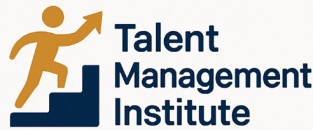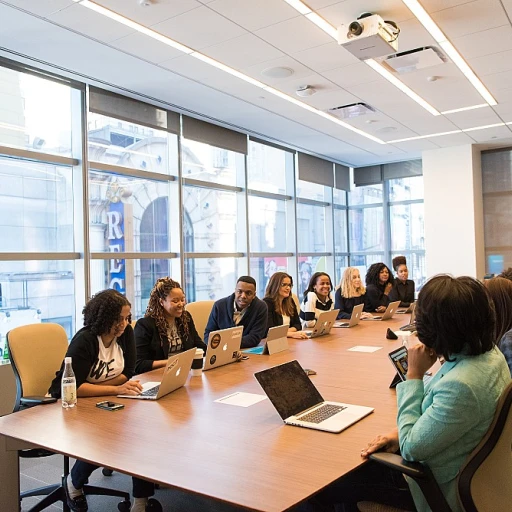Understanding the Culture of Community
Embracing the Values that Define a Community
Creating a strong community within an organization starts by understanding the unique culture that binds its members together. Cultural work is not just about introducing logos and mottos; it's about fostering a genuine connection among people. This bond is the essence of the community development process, which thrives on shared experiences and mutual understanding of cultural values.
The starting point for building this community culture is acknowledging the diversity present within the group. This diversity brings a rich tapestry of ideas and perspectives, paving the way for innovation and change. When company culture respects and integrates these varied perspectives, it fortifies the foundation of a healthy work environment.
Recognizing cultural differences and promoting inclusivity are crucial for establishing a sense belonging among community members. Engaging in open dialogue about cultural considerations can lead to a heightened social awareness, helping to align the company’s mission with the evolving dynamics of its people.
A community-based approach not only elevates the work experience but also has a direct impact on mental health. When individuals feel valued and heard, their engagement and productivity flourish. Power building within this cultural framework empowers every member, making them indispensable assets to their group.
Creating a culture community that celebrates diversity and inclusivity is an ongoing journey. This journey demands a proactive stance in embracing change and incorporating the community cultural elements that resonate with both the organization and its employees. By doing so, a company sets the stage for a sustainable, engaged, and thriving community. For more insights, explore the importance of reasonable suspicion training in talent management that helps in nurturing a respectful and inclusive workplace.
Building Connections Through Communication
Facilitating Meaningful Communication for Stronger Communities
In the realm of talent management, communication plays a crucial role in fostering a sense of belonging among employees. It's about creating an environment where community members feel heard and valued, ultimately contributing to a strong community culture. This process involves recognizing the values and cultural differences within a group, ensuring that every voice resonates, enhancing both individual and collective mental health.
Open lines of communication lay the foundation for community development and cultural engagement. When people are empowered to share ideas and express concerns, it enhances their connection to the corporate culture and sense of belonging. Such engagement encourages community cultural growth, enriching the work environment and bolstering organizational success.
Building connections through effective communication involves several steps:
- Encouraging candid conversations during team meetings, promoting a two-way dialogue where everyone can contribute suggestions and feedback.
- Leveraging digital platforms to maintain a continuous flow of information, whether employees work remotely or on-site.
- Incorporating cultural considerations within communication strategies to respect the diverse backgrounds of community members.
Creating a communicative atmosphere where every team member feels integral supports overall community well-being. As a result, the company culture is fortified, leading to a dynamic workplace where everyone thrives and progresses collectively.
Learn more about how providing a strong communication framework can impact employee benefits and their role in fostering a comprehensive employment package by exploring the article on employment benefits and their impact.
Encouraging Collaboration and Teamwork
Fostering Collaboration within Your Organization
The essence of creating a strong community lies in the ability to foster collaboration within your organization. Collaborative work environments provide a foundation where community members thrive by engaging with diverse cultural perspectives. This engagement encourages a sense of belonging and enhances the overall community culture. In an organizational context, the process of collaboration involves more than just working together on projects. It embodies a strong commitment to shared values and goals, known as the cultural work ethic. When individuals within the group come together—each bringing their unique cultural values and ideas—there is an opportunity for the development of innovative solutions. As a part of cultivating this environment, organizations must consider cultural differences and ensure that these variations are seen as strengths, not obstacles. To effectively cultivate a culture that values collaboration, companies should focus on:- Creating open channels of communication: Regular feedback loops and transparent processes increase the power of the group by making it easier for community members to express their ideas and concerns freely.
- Implementing structured team-building activities: Such initiatives facilitate bonding among team members, encouraging them to rely on each other's strengths for the benefit of the community.
- Promoting cultural awareness and respect: Encourage team members to learn about each other's cultural backgrounds, fostering a community engaged in mutual understanding and appreciation.
- Empowering leaders to model collaborative behaviors: Leadership plays a crucial role in community development. Leaders must exemplify collaboration if they wish to instill these values throughout their teams.
Recognizing and Celebrating Diversity
Embracing Differences to Strengthen Community
In the realm of talent management, recognizing and celebrating diversity is not just about acknowledging the varied backgrounds and perspectives of community members; it encompasses embracing cultural differences as a powerful asset for building a cohesive community culture. Communities thrive when they integrate diverse cultural values and encourage a sense of belonging among their members.
Diversity is integral to the health and development of both individuals and the group as a whole. A culturally diverse work environment fosters a vibrant community that can adeptly navigate change and continue its growth. This diversity should be viewed as a strength in cultural work, promoting opportunities for members to learn from one another, fostering creativity, and contributing to community engagement.
Creating a strong community culture in the workplace involves a process of valuing all members for their unique contributions. By actively appreciating the richness that diverse perspectives bring, organizations can cultivate a sense of community cultural engagement, where everyone feels heard and respected. For example, organizing social events that celebrate different cultural festivities can enhance understanding and connection among employees.
Moreover, acknowledging and rewarding diverse contributions sends a clear message about the organization's core values. This recognition serves as a driving force in promoting community-based initiatives that prioritize mental health and well-being. Through such efforts, organizations not only uphold their commitment to diversity but also stimulate a robust community power building founded on mutual respect and shared goals.
While diversity can pose challenges if not properly managed, the power of addressing these challenges collaboratively cannot be underestimated. Encouraging open dialogues about cultural considerations reinforces the value of inclusivity and ensures that all community members can contribute their best.
Leadership's Role in Cultivating Community
The Influence of Leadership on Community Culture
Leadership plays a pivotal role in shaping the community culture within an organization. Leaders are not just decision-makers; they are the architects of the cultural values that permeate the workplace. By embodying the principles of community engagement and cultural diversity, leaders can foster a strong community where every member feels valued and included.
Effective leaders understand the power of building relationships based on trust and respect. They actively participate in the process of community development, ensuring that the cultural values align with the company culture. This involves recognizing the unique contributions of each community member and encouraging an environment where diverse perspectives are celebrated.
One of the key responsibilities of leadership is to promote a sense of belonging among employees. This can be achieved through transparent communication and by creating opportunities for social interactions that strengthen the bonds between team members. Leaders should be mindful of cultural differences and strive to create an inclusive atmosphere where everyone feels comfortable sharing their ideas and experiences.
Moreover, leaders have the power to influence change by setting an example. When leaders demonstrate a commitment to cultural work and prioritize the mental health and well-being of their teams, they inspire others to do the same. This community-based approach not only enhances employee satisfaction but also contributes to the overall health and success of the organization.
In conclusion, leadership is integral to cultivating a community culture that supports diversity and inclusion. By prioritizing the development of a cohesive and supportive environment, leaders can drive positive change and ensure that every individual feels a sense of belonging within the workplace.
Measuring the Impact of Community Culture
Evaluating the Success of Community Culture
Creating a vibrant community culture within an organization is not a one-time effort; it requires continuous observation and assessment to ensure that the goals are being met and that the feeling of inclusivity is genuinely present among community members. Recognizing and celebrating diversity and fostering open communication play pivotal roles in this process. Here, we'll explore methods to measure the impact of community culture on both an individual and organizational scale.
A successful approach to evaluating community culture involves several key strategies:
- Surveys and Feedback: Gathering input from employees through surveys and direct feedback can provide valuable insights into how well the cultural values are being integrated into daily work life. Listening to members’ perceptions can highlight areas for improvement and help tailor initiatives to better meet community needs.
- Monitoring Engagement Levels: Track the engagement levels of employees in various cross-departmental activities. Consistent participation can be a strong indicator of a thriving community culture where people feel valued and motivated to engage.
- Assessing Diversity and Inclusion Metrics: Regularly review diversity metrics as well as the inclusivity of workplace practices. This involves looking at the representation of different cultural, social, and demographic groups within the team and their roles in both leadership and collaborative efforts.
- Employee Mental Health and Well-being: The mental health and overall well-being of employees can be a direct reflection of the company culture. Seek out feedback specifically related to stress levels, job satisfaction, and sense of belonging to evaluate this aspect of community health.
- Observing Group Dynamics: Healthy community interaction often leads to improved group dynamics and productivity. Assess how employees collaborate and communicate, noting any positive change in group performance dynamics.
Ultimately, creating a sense of belonging and building a strong community culture requires active participation from leadership, a clear understanding of core values, and an inclusive approach that embraces cultural diversity. By employing these assessment strategies, organizations can ensure that their community development efforts align with their long-term strategic goals and adapt to the evolving needs of their members. This ongoing process not only enhances organizational culture but also leverages the power of community engagement to drive both individual and company-wide success.



-large-teaser.webp)








